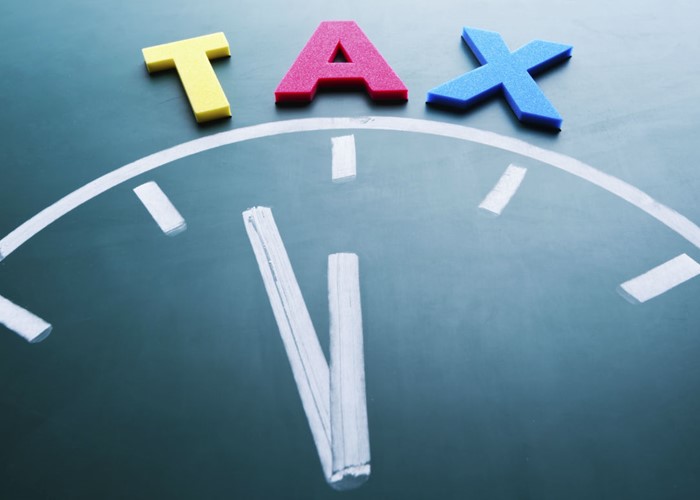Where Council Tax is rising and falling in 2013/14

With the 2013/14 tax year nearly upon us, we look at which councils are increasing or cutting Council Tax the most.
The new tax year is nearly upon us. And while there’s good news in the form of the increased Income Tax personal allowance, there’s also the small matter of changes to Council Tax to consider.
According to the Government, many of us won’t see much change. The Government has set aside £450 million, payable over the next two years, to help councils cope with freezing council tax in 2013/14.
Not every council has taken them up on that offer, but it does mean that the average Band D Council Tax level for the coming tax year has increased by 0.8% (which the Government is pitching as the equivalent of a real-terms cut, thanks to inflation).
However, when you look at each individual council’s actions, the number of councils actually freezing council tax in cash terms are minimal. The vast majority are imposing increases.
English councils that have cut Council Tax
Let’s start by taking a look at the councils in England that have gone further and announced a cut in Council Tax for 2013/14 – in cash terms anyway.
|
Local authority |
Band D 2012/13 |
Band D 2013/14 |
% change |
|
Hammersmith & Fulham |
£1,088 |
£1,061 |
-2.5% |
|
Windsor & Maidenhead UA |
£1,203 |
£1,182 |
-1.7% |
|
Chorley |
£1,515 |
£1,496 |
-1.3% |
|
Ribble Valley |
£1,479 |
£1,460 |
-1.3% |
|
Hyndburn |
£1,553 |
£1,534 |
-1.2% |
|
Pendle |
£1,577 |
£1,557 |
-1.2% |
|
Rossendale |
£1,578 |
£1,559 |
-1.2% |
|
South Ribble |
£1,537 |
£1,518 |
-1.2% |
|
West Lancashire |
£1,519 |
£1,500 |
-1.2% |
|
Fylde |
£1,533 |
£1,516 |
-1.1% |
|
Wyre |
£1,511 |
£1,494 |
-1.1% |
|
Lancaster |
£1,527 |
£1,512 |
-1% |
|
Burnley |
£1,581 |
£1,567 |
-0.9% |
|
Preston |
£1,594 |
£1,582 |
-0.8% |
|
Shropshire UA |
£1,500 |
£1,488 |
-0.8% |
|
Hounslow |
£1,397 |
£1,388 |
-0.7% |
|
Westminster |
£685 |
£681 |
-0.5% |
|
Barking & Dagenham |
£1,323 |
£1,319 |
-0.3% |
|
Barnet |
£1,420 |
£1,416 |
-0.3% |
|
Bexley |
£1,435 |
£1,432 |
-0.3% |
|
Brent |
£1,366 |
£1,362 |
-0.3% |
|
Camden |
£1,328 |
£1,325 |
-0.3% |
|
Ealing |
£1,367 |
£1,363 |
-0.3% |
|
Enfield |
£1,407 |
£1,403 |
-0.3% |
|
Greenwich |
£1,288 |
£1,284 |
-0.3% |
|
Hackney |
£1,305 |
£1,301 |
-0.3% |
|
Hillingdon |
£1,420 |
£1,416 |
-0.3% |
|
Islington |
£1,269 |
£1,265 |
-0.3% |
|
Kensington & Chelsea |
£1,089 |
£1,086 |
-0.3% |
|
Lambeth |
£1,232 |
£1,228 |
-0.3% |
|
Merton |
£1,413 |
£1,410 |
-0.3% |
|
Newham |
£1,252 |
£1,249 |
-0.3% |
|
Redbridge |
£1,402 |
£1,399 |
-0.3% |
|
Southwark |
£1,219 |
£1,215 |
-0.3% |
|
Sutton |
£1,448 |
£1,444 |
-0.3% |
|
Tower Hamlets |
£1,192 |
£1,189 |
-0.3% |
|
Waltham Forest |
£1,459 |
£1,455 |
-0.3% |
|
Haringey |
£1,491 |
£1,487 |
-0.2% |
|
Richmond upon Thames |
£1,594 |
£1,590 |
-0.2% |
|
Newcastle-under-Lyme |
£1,459 |
£1,458 |
-0.1% |
|
South Staffordshire |
£1,419 |
£1,417 |
-0.1% |
|
St Helens |
£1,396 |
£1,395 |
-0.1% |
|
Stafford |
£1,440 |
£1,439 |
-0.1% |
Source: Communities.gov.uk
None of these cuts actually amounts to an above-inflation cut. Indeed, the vast majority of them are very modest at only a couple of pounds.
English councils that have raised Council Tax
There are simply too many councils raising Council Tax in cash terms to cover here. So instead I’ve just featured the councils imposing rises of at least 2%.
|
Local authority |
Band D 2012/13 |
Band D 2013/14 |
% change |
|
Manchester |
£1,327 |
£1,379 |
3.9% |
|
Bury |
£1,457 |
£1,511 |
3.7% |
|
Oldham |
£1,547 |
£1,604 |
3.7% |
|
Rochdale |
£1,482 |
£1,537 |
3.7% |
|
Tameside |
£1,366 |
£1,417 |
3.7% |
|
Bolton |
£1,414 |
£1,464 |
3.6% |
|
South Cambridgeshire |
£1,494 |
£1,536 |
2.8% |
|
Stockport |
£1,560 |
£1,604 |
2.8% |
|
Bradford |
£1,283 |
£1,318 |
2.7% |
|
Wakefield |
£1,308 |
£1,341 |
2.6% |
|
Calderdale |
£1,417 |
£1,452 |
2.5% |
|
East Cambridgeshire |
£1,504 |
£1,542 |
2.5% |
|
Huntingdonshire |
£1,519 |
£1,558 |
2.5% |
|
Kirklees |
£1,405 |
£1,440 |
2.5% |
|
Wigan |
£1,369 |
£1,403 |
2.4% |
|
Fenland |
£1,580 |
£1,617 |
2.3% |
|
Slough UA |
£1,368 |
£1,399 |
2.3% |
|
West Berkshire UA |
£1,503 |
£1,538 |
2.3% |
|
West Oxfordshire |
£1,457 |
£1,491 |
2.3% |
|
Cambridge |
£1,417 |
£1,452 |
2.2% |
|
Reading UA |
£1,499 |
£1,531 |
2.2% |
|
Redcar & Cleveland UA |
£1,610 |
£1,644 |
2.2% |
|
Walsall |
£1,532 |
£1,566 |
2.2% |
|
Wokingham UA |
£1,462 |
£1,494 |
2.2% |
|
Runnymede |
£1,490 |
£1,522 |
2.1% |
|
Elmbridge |
£1,553 |
£1,584 |
2% |
|
Epsom & Ewell |
£1,520 |
£1,551 |
2% |
|
Guildford |
£1,519 |
£1,550 |
2% |
|
Leicester City UA |
£1,455 |
£1,484 |
2% |
|
Luton UA |
£1,418 |
£1,446 |
2% |
|
Middlesbrough UA |
£1,566 |
£1,597 |
2% |
|
Mole Valley |
£1,509 |
£1,539 |
2% |
|
Oxford |
£1,583 |
£1,614 |
2% |
|
Plymouth UA |
£1,478 |
£1,508 |
2% |
|
Portsmouth UA |
£1,357 |
£1,384 |
2% |
|
Reigate & Banstead |
£1,552 |
£1,583 |
2% |
|
Southampton UA |
£1,447 |
£1,475 |
2% |
|
Southend-on-Sea UA |
£1,324 |
£1,351 |
2% |
|
Spelthorne |
£1,525 |
£1,556 |
2% |
|
Stockton-on-Tees UA |
£1,535 |
£1,565 |
2% |
|
Surrey Heath |
£1,556 |
£1,587 |
2% |
|
Thurrock UA |
£1,306 |
£1,333 |
2% |
|
Warrington UA |
£1,375 |
£1,402 |
2% |
|
Wirral |
£1,471 |
£1,501 |
2% |
|
Woking |
£1,558 |
£1,589 |
2% |
Source: Communities.gov.uk
So, some far more significant changes when it comes to Council Tax increases, with residents in Manchester, Bury, Oldham, Rochdale, Tameside and Bolton all needing to shell out around £50 extra next year.
Council tax in Wales
There has been something of a furore over Council Tax in Wales, with the Welsh Government accused of using the money set aside to pay for Council Tax freezes for other purposes.
Across the principality, Council Tax will rise by an average of 2.9%. Here’s the breakdown of the changes in each of the Unitary Authorities.
|
Local authority |
Band D 2012/13 |
Band D 2013/14 |
% change |
|
Vale of Glamorgan |
£1,149 |
£1,206 |
5% |
|
Isle of Anglesey |
£1,140 |
£1,194 |
4.8% |
|
Rhondda Cynon Taf |
£1,340 |
£1,398 |
4.3% |
|
Blaenau Gwent |
£1,463 |
£1,526 |
4.3% |
|
North Port Talbot |
£1,416 |
£1,476 |
4.2% |
|
Swansea |
£1,170 |
£1,220 |
4.2% |
|
Conwy |
£1,130 |
£1,176 |
4.1% |
|
Bridgend |
£1,296 |
£1,347 |
3.9% |
|
Merthyr Tydfil |
£1,377 |
£1,427 |
3.7% |
|
Gwynedd |
£1,278 |
£1,323 |
3.6% |
|
Newport |
£1,023 |
£1,057 |
3.3% |
|
Torfaen |
£1,208 |
£1,246 |
3.2% |
|
Pembrokeshire |
£945 |
£974 |
3.2% |
|
Carmarthenshire |
£1,216 |
£1,254 |
3.1% |
|
Ceredigion |
£1,169 |
£1,205 |
3.1% |
|
Flintshire |
£1,184 |
£1,221 |
3.1% |
|
Wrexham |
£1,166 |
£1,200 |
3% |
|
Powys |
£1,168 |
£1,203 |
3% |
|
Caerphilly |
£1,100 |
£1,128 |
2.5% |
|
Denbyshire |
£1,306 |
£1,336 |
2.3% |
|
Cardiff |
£1,108 |
£1,120 |
1.1% |
|
Monmouthshire |
£1,229 |
£1,236 |
0.6% |
Source: StatsWales
Council tax in Scotland
For the sixth straight year Council Tax has been frozen by all of Scotland’s local authorities.
Rates in Northern Ireland
Northern Ireland doesn’t have Council Tax, instead using a system called rates. These consist of both regional and district rates. Regional rates are set by the Northern Ireland Assembly and account for just over half of a typical rates bill. District rates are fixed by each district council, and vary depending on whether the property is domestic or non-domestic.
Your total rate is calculated as follows: the regional rate and the district rate are added together, and then multiplied by the capital value of your property.
Regional rates are increasing by 2.7%, while the table below details the changes to district rates across the various districts. I’ve just looked at domestic rates here.
|
District council |
2012/13 rate (pence) |
2013/14 rate (pence) |
% change |
|
Strabane |
0.3580 |
0.3715 |
3.77% |
|
Castlereagh |
0.2136 |
0.2198 |
2.90% |
|
Lame |
0.3694 |
0.3799 |
2.84% |
|
Down |
0.3423 |
0.3513 |
2.63% |
|
Banbridge |
0.3626 |
0.3706 |
2.21% |
|
Cookstown |
0.2797 |
0.2853 |
2% |
|
Derry |
0.4092 |
0.4173 |
1.98% |
|
Lisburn |
0.2592 |
0.2643 |
1.97% |
|
Magherafelt |
0.2641 |
0.2693 |
1.97% |
|
Coleraine |
0.3146 |
0.3206 |
1.91% |
|
Carrickfergus |
0.3810 |
0.3881 |
1.86% |
|
Limavady |
0.4050 |
0.4124 |
1.83% |
|
Moyle |
0.3832 |
0.3902 |
1.83% |
|
Armagh |
0.4052 |
0.4121 |
1.7% |
|
Fermanagh |
0.2501 |
0.2543 |
1.68% |
|
Ballymena |
0.3758 |
0.3820 |
1.65% |
|
Craigavon |
0.3846 |
0.3907 |
1.59% |
|
Newtownabbey |
0.3379 |
0.3423 |
1.30% |
|
Newry & Moume |
0.3261 |
0.3303 |
1.29% |
|
North Down |
0.2852 |
0.2880 |
0.98% |
|
Omagh |
0.3772 |
0.3809 |
0.98% |
|
Ards |
0.2746 |
0.2771 |
0.91% |
|
Antrim |
0.3672 |
0.3690 |
0.49% |
|
Ballymoney |
0.3525 |
0.3525 |
0% |
|
Belfast |
0.3094 |
0.3094 |
0% |
|
Dungannon & South Tyrone |
0.2852 |
0.2852 |
0% |
Source: NIDirect
More on Council Tax
Council Tax Reduction schemes: what you need to know
Second home Council Tax discount to end in April
How to slash your Council tax bill
Council Tax rebanding: the risks
Most Recent
Comments
-
HMRC and Local Councils are undemocratic monopolies. They have the cheek to refer to us as their 'customers' in their expensive leaflets paid for by us to tell us why we should be grateful for their services. The definition of a customer is one who has the right to withdraw their custom when they are dissatisfied with the services provided. I agree with nickpike. No council official should earn more than the prime minister. They should retire at the same time as those in the private sector. Also, the pension rules should be the same. Much of the public sector pensions liability is unfunded. I believe one quarter of all council revenues goes directly to paying pensions in some areas. This is not sustainable, and manifestly unfair to ratepayers.
REPORT This comment has been reported. -
The rates (council tax or whatever) doubled in 6 years under Labour for no improved services. Someone should organise a boycott to bring these excessive rates down. After all, councils were squirrelling away millions in Icelandic banks, and we lost the lot, so we were overcharged anyway. Why council leaders get paid more than the Prime Minister is beyond me, and 25% goes to the over bloated pensions they expect when they retire before the private sector do.I had to pay for my own pension, 6% of gross salary. We are being ripped off. Time to act.
REPORT This comment has been reported. -
I thought council tax can only increase above 2% if there has been a local vote on the matter - otherwise the increase is illegal. I would not pay extra if I lived in one of these areas above 2%. Herts is particular St Albans stated that the tax is not increasing then I get a bill for 0.2% increase. I have therefore paid the same amount as last year and will remain so until they (the council) explain what the increase is for.
REPORT This comment has been reported.
Do you want to comment on this article? You need to be signed in for this feature









05 April 2013